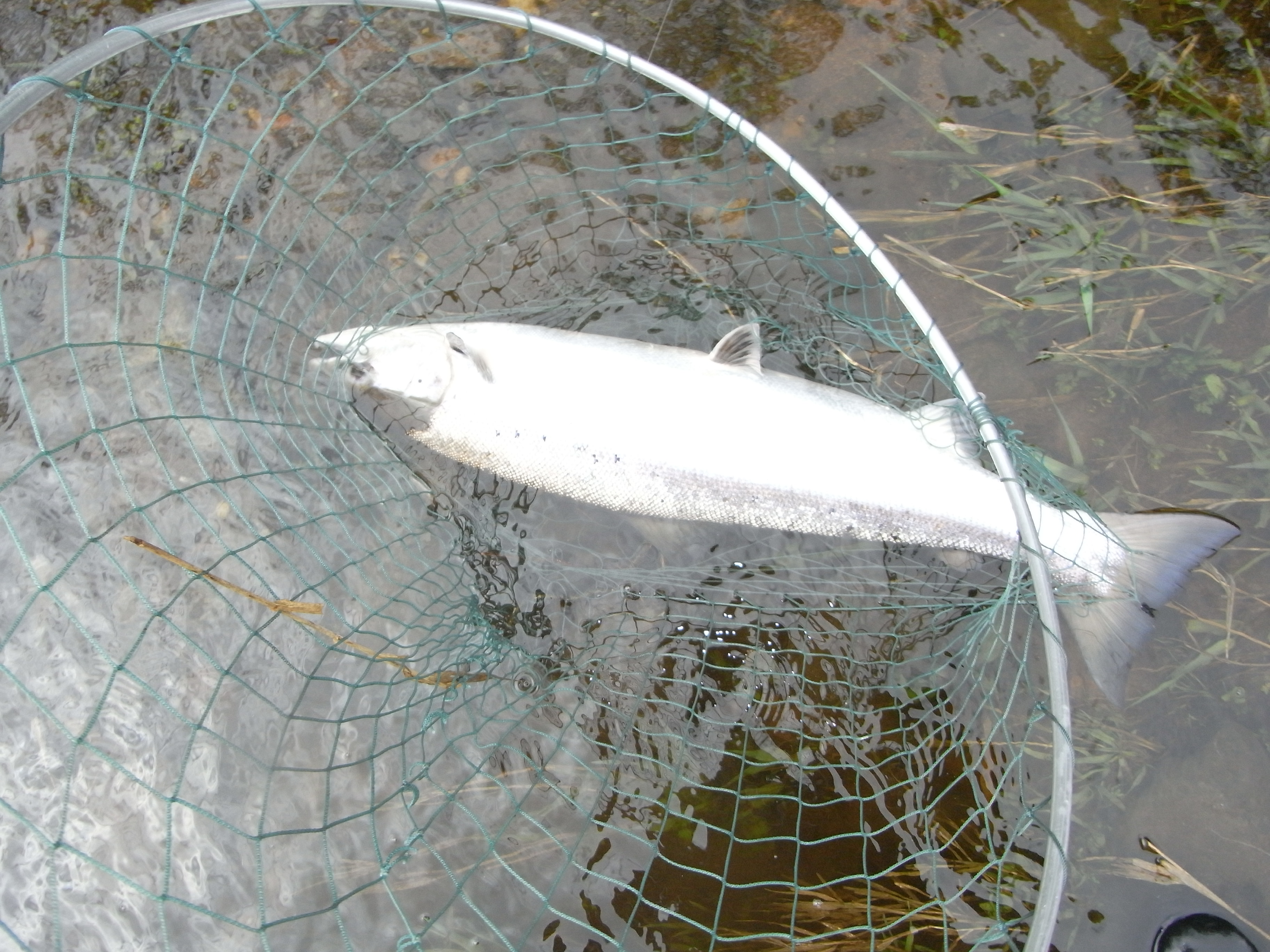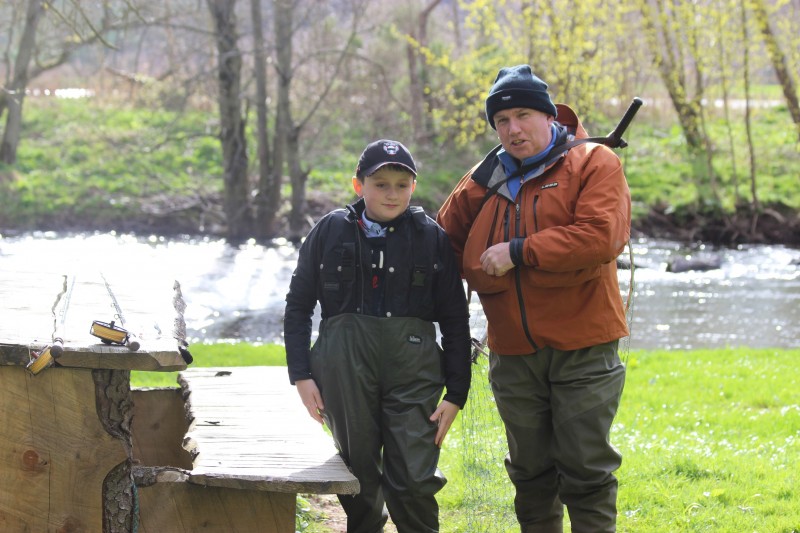STOCK DYNAMICS & ASSESSMENT. WHO REALLY KNOWS HOW MANY SRING FISH ARE IN THE SOUTH ESK?
One of AST’s five strategic projects is to develop a methodology for managers and anglers to understand salmon reproduction dynamics. In the course of time this improved understanding should lead to better stock assessment. Part of understanding stock dynamics will be recognising different populations within the stock of a river catchment. The following post is a comment on how this might apply to the Angus South Esk.
As I watched Rick Rosenthal, Sir David Attenborough’s photographer for parts of his Blue planet films, slide into a deep holding pool on the South Esk last week, I thought, “this has to be an accurate way of recording numbers of spring fish already in the river” – “or, at least it has to be better than anything we are using at present”.
We read the river reports in Trout and Salmon which try to provide readers with some idea of numbers of fish in the salmon rivers of each home country. Some of those reports are laden with doom. After a Sunday afternoon walk along the banks the reporter might state (and too often does!) “I visited the river and saw no sign of a salmon or sea trout. This must surely be a very bad year for the river”.
LAZY ASSESSMENTS ARE MISLEADING
In fact such a visit to the river is unlikely to tell you much about abundance of fish in the river, whether or not you see fish. Let me give you an example; last week on a well known beat of the South Esk I met a group of five mustard-keen and experienced fly fishermen who told me that they had hardly seen a fish all week. They arrived on the bank of that holding pool into which Rick Rosenthal, in his wet suit, flippers with camera and snorkel, had just entered.
SUMMER SUNSHINE & HEAT ON A QUIET RIVER
A few fresh sea trout, newly arrived from the sea, were lying in the tail of the pool flashing their silvery flanks in the bright sunshine. But the deep dub and channel into the pool were quiet, except for the rises of foraging parr. As Rick floated silently down the upper part of the pool, occasionally diving deep into the rocky mini-caves of the carved out depths, he saw good numbers of multi-sea-winter salmon, mostly coloured and clearly early running fish. Some of these fish were skittish and swam away from him to find more secure parts of the pool, but mostly these salmon were unmoved by Rick’s presence. That enabled him to take good underwater pictures of salmon, some of which were over 20lbs, and amongst which were some fresher, more recently arrived, fish.
SNORKEL COUNTING DEMONSTRATED
Rick counted between 20 and 25 salmon in that holding pool, which, before his underwater survey, everyone thought was devoid of salmon. It would be reasonable to ask the question, “what is the value of the river reports when they are based on casual observation by an untrained person?” While catches are evidence that some fish were present, they give little information on what else was in the river.
AN EFFECTIVE WAY TO COUNT SPRING SALMON
In the absence of counters, or any reliable form of counting of our spring salmon, we could take a leaf out of the Canadian fishery managers’ example of practical ways of counting fish. There really is no substitute for an eyeball to eyeball meeting of human snorkel-counter with a fish. On the South Esk we might for example take six known holding pools in the upper and middle river.
SUMMER COUNTING EYEBALL TO EYEBALL
Every late June or July, when summer low level is reached, the same pools could be visited and the fish in them counted in exactly the same way every year. The sizes of the fish and their condition could be assessed and recorded by a companion on the bank, who could double-up as safety, as well as recorder and monitor of adherence to year-on-year measuring protocols. Such measures are used routinely on the smaller tributaries of big rivers such as the Mirimachi. There is no reason why we cannot do the same here.
HOW GOOD WAS THE SOUTH ESK 2014 SPRING RUN?
Probably,”not bad” is an educated guess based on Rick’s report, supported by the visual evidence provided by his film footage. At least, by counting salmon physically, and assessing their maturation towards spawning, we can have some idea of the spring run’s abundance & spawning potential. We have very little idea of that at present, despite the efforts of Marine Scotland to tell us where our spring salmon spawn, but that has nothing to do with numbers.
WILL WE DO IT, OR REMAIN IN THE DARK?
Such a methodology for assessing the spring component of the River’s stock of Atlantic salmon would require some organisation and risk assessment, but it is not exactly rocket science, is it? Incidentally, the five ‘mustard-keen fishermen’ I mentioned at the beginning of this post were amazed and reassured by the ability of the South Esk to conceal its riches!
TA


